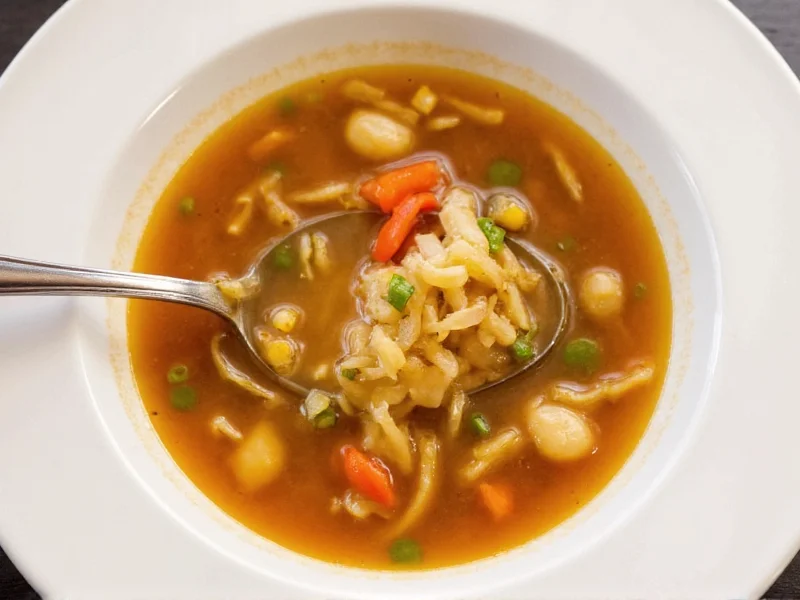Creating a satisfying cabbage soup requires understanding both technique and ingredient balance. This humble dish has sustained cultures worldwide for centuries, from Eastern European borscht variations to Korean kimchi stews. The beauty of cabbage soup lies in its versatility—it transforms humble ingredients into a nourishing meal with minimal effort and cost.
Essential Ingredients for Perfect Cabbage Soup
Quality ingredients form the foundation of exceptional cabbage soup. While regional variations exist, these core components deliver consistent results:
| Ingredient | Quantity | Preparation Notes |
|---|---|---|
| Green cabbage | 1 medium head (2 lbs) | Core removed, thinly sliced (about 8 cups) |
| Yellow onion | 1 large | Diced (about 1½ cups) |
| Carrots | 2 medium | Peeled and sliced into coins |
| Garlic | 3-4 cloves | Minced |
| Vegetable broth | 6 cups | Low-sodium preferred |
| Canned tomatoes | 1 (14.5 oz) can | Diced, with juices |
Step-by-Step Cabbage Soup Preparation
Follow these professional cooking techniques to elevate your cabbage soup from basic to exceptional:
- Sauté aromatics properly: Heat 2 tablespoons olive oil in a 5-6 quart pot over medium heat. Add onions and cook until translucent (5-7 minutes), stirring occasionally. Add garlic during the last minute to prevent burning.
- Build flavor layers: Stir in carrots and cook for 3 minutes until slightly softened. This step develops sweetness through the Maillard reaction.
- Add cabbage strategically: Incorporate sliced cabbage in batches, allowing each addition to wilt before adding more. This prevents overcrowding and ensures even cooking.
- Simmer with patience: Pour in broth and tomatoes, bring to a gentle boil, then reduce heat to low. Cover and simmer for 30-40 minutes until cabbage reaches desired tenderness.
- Season thoughtfully: Add 1 teaspoon paprika, ½ teaspoon black pepper, and 1 bay leaf during the last 15 minutes of cooking. Adjust salt to taste after simmering.
Professional Cooking Tips for Better Results
Master these techniques to transform your cabbage soup from ordinary to restaurant-quality:
- Cabbage selection matters: Choose firm heads with crisp, vibrant green leaves. Avoid any with yellowing or soft spots which indicate age.
- Cutting technique impacts texture: Thin, uniform slices (about ¼ inch) ensure even cooking. Thicker pieces remain crunchy while thinner ones turn mushy.
- Acidity balance is crucial: Add 1 tablespoon apple cider vinegar or lemon juice at the end to brighten flavors and enhance the natural sweetness of the cabbage.
- Don't rush the simmer: Proper cooking time allows flavors to meld. Thirty minutes is minimum; 45 minutes yields deeper flavor development without compromising texture.
Popular Cabbage Soup Variations
Adapt this basic recipe to suit different dietary needs and flavor preferences:
- Protein-packed version: Add 1 cup cooked white beans or ½ pound diced turkey sausage during the last 20 minutes of cooking for a more substantial meal.
- Keto-friendly adaptation: Increase healthy fats by adding ¼ cup olive oil and ½ avocado per serving. Omit tomatoes and use bone broth instead of vegetable broth.
- Spicy Eastern European style: Include 1 diced bell pepper with the onions and add 1 teaspoon caraway seeds with the broth for authentic flavor.
- Quick weeknight version: Use pre-shredded cabbage and frozen carrots to reduce prep time to under 10 minutes while maintaining quality.
Storage and Reheating Guidelines
Cabbage soup's flavor improves with time, making it ideal for meal preparation. Follow these storage recommendations:
- Refrigeration: Cool completely within 2 hours of cooking. Store in airtight containers for up to 5 days.
- Freezing: Portion into freezer-safe containers, leaving 1-inch headspace for expansion. Properly stored, it maintains quality for 3 months.
- Reheating: Thaw frozen soup overnight in the refrigerator. Reheat gently over medium-low heat, adding ¼ cup broth or water if needed to restore consistency.
- Flavor enhancement: Add fresh herbs or a splash of vinegar when reheating to refresh flavors that may have mellowed during storage.
Troubleshooting Common Cabbage Soup Issues
Address these frequent preparation challenges for perfect results every time:
- Too watery: Simmer uncovered for 10-15 minutes to reduce liquid. Alternatively, mix 1 tablespoon cornstarch with 2 tablespoons cold water and stir in during the last 5 minutes of cooking.
- Bitter taste: Balance with ½ teaspoon sugar or 1 tablespoon grated carrot. Bitterness often comes from overcooked cabbage or using older produce.
- Mushy texture: Reduce simmering time and add cabbage later in the cooking process. Different cabbage varieties cook at different rates—Napa cabbage requires less time than green cabbage.
- Lack of depth: Build flavor by browning meat first (if using) or adding a Parmesan rind during simmering. A small amount of soy sauce (1 teaspoon) can add umami without making the soup taste Asian-inspired.











 浙公网安备
33010002000092号
浙公网安备
33010002000092号 浙B2-20120091-4
浙B2-20120091-4